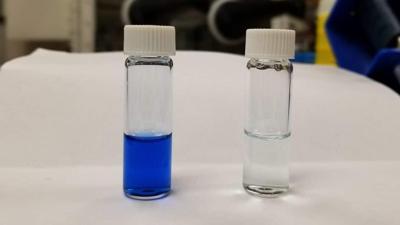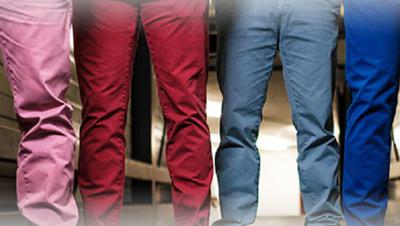Interview with Guillaume Boissonnat-Wu, Pili

Guillaume Boissonnat (Source: Thierry Augereau)
Biotech company Pili develops bio-based dyes and pigments to reduce the environmental footprint of the color industry. Thanks to its hybrid technology, which combines industrial fermentation and green chemistry, the company offers an environmentally friendly and competitive alternative to petroleum-based dyes and pigments. Pili aims to replace petroleum-based indigo with a bio-based indigo to reduce dependence on petroleum and cut CO2 emissions associated with production by more than 50%.
Your mission is to produce sustainable dyes and pigments to reduce the environmental footprint of the color industry. What is your approach to achieve this goal?
Our specificity lies in the replacement of the petrochemical-based and carbon-intensive input molecules of the color industry with low-carbon and biobased ones. We have therefore developed an industrial-scale fermentation process that gives access to a key intermediate with a very low footprint. This allows us to produce a wide variety of biobased and high-performance dyes and pigments through innovative green processes.
Our specificity lies in the replacement of the petrochemical-based and carbon-intensive input molecules of the color industry with low-carbon and biobased ones. We have therefore developed an industrial-scale fermentation process that gives access to a key intermediate with a very low footprint. This allows us to produce a wide variety of biobased and high-performance dyes and pigments through innovative green processes.
Can you tell us a little more about the raw materials? And what about the availability?
Our raw materials are carbohydrates of natural origin. They can be derived from different plants and are usually separate streams from the ones used in the food industry. For example, certain carbon sources are coproducts from the sugar industry, others derive from the starch industry and others are waste streams of wood-derived industries. They all are bio-based and available at 1000-ton scale.
How is the performance of these dyes and pigments? Are the brilliance and fastness comparable or do we have to accept sacrifices in this respect?
Our strategy has always been to focus on our client’s processes and therefore to bring no change in process or in performance. We have therefore chosen to produce existing color index molecules in a bio-based and sustainable fashion. We offer the same dyestuff you are used to dyeing with at the same purity but in a bio-based and low-carbon version. Therefore, as expected, our ISO fastness results are exactly the same as the petrochemical-based counterpart.
Where are we on the road to a truly sustainable textile industry in Europe? Is there some kind of timetable for when and how the European textile industry will be clean, safe and climate neutral (without climate compensation)?
It is hard for any industry to become carbon neutral other than with climate compensation since there is no carbon-neutral energy source. The textile industry is investing heavily in more sustainable ways to produce, sell and recycle textiles. A good example of that is Fashion for Good, an accelerator of sustainable fashion solutions in which we have been incorporated. The job to do is complex and encompasses many different industries from agriculture to produce the textile to yarning, chemicals for wet processing, machinery for knitting, responsible business models and recycling or reuse of textile effects. We are doing a part of the job in this industry and are happy to be part of a global effort in so many different verticals in our industry.
How do you see the role of the industry here, and what is the role of the consumer?
In my opinion, the road to normality for sustainable manufacturing in fashion has 3 main stages – and it is similar in other businesses.
First, the industry has to offer products that have measurable impacts for the climate and biodiversity (CO2, biodiversity) to allow the consumer to choose and expose his preferences. That will probably come with a premium at first given the little economies of scale, none of those products are manufactured at the same scale as conventional fashion today. We’re at that stage now.
Then the consumer shall show the industry that their choices lean towards products that have a demonstrated benefit for the climate and biodiversity. This will give power to textile brands executives to better price those products and engage in large-scale purchasing because they believe that such production methods will become the standard because that’s the customer’s choice in the end.
This will eventually push manufacturers of all the value chain to engage the necessary investments to gain competitiveness. In the end, sustainable products with good competitiveness will turn sustainable manufacturing methods into a new standard for the industry and impact not only the niche markets. This is our mission at Pili.
The interview was conducted by Mechthild Maas, editor of TextileTechnology, with Guillaume Boissonnat-Wu, Scientific and Industrial Director at Pili Inc., Toulouse/France.



